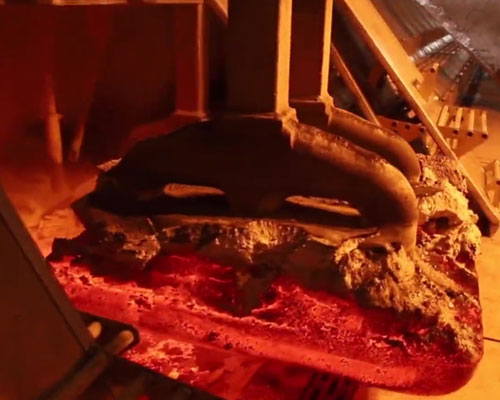When aluminum alloy is smelted, the refining and degassing process is needed to dissolve the hydrogen into the aluminum liquid, which strengthens the control of the aluminum alloy inhalation during the melting process.
Production practice shows that the hydrogen absorption of aluminum liquid is carried out on the surface, which is not only related to the partial pressure of the aluminum liquid surface, but also has a greater relationship with the alloy melting temperature and melting time. The higher the melting temperature of the alloy, the longer the melting time and the holding time of the molten aluminum, the more sufficient the hydrogen is to diffuse in the aluminum, the greater the amount of hydrogen absorbed by the aluminum, and the greater the probability of pinholes. Someone has done an experiment. The longer the storage time of the aluminum liquid, the gas content of the aluminum alloy increases approximately proportionally. Therefore, under the conditions of mass production, in order to reduce the absorption of hydrogen during aluminum alloy melting, we must strictly implement the aluminum alloy melting process regulations.

Refining and Degassing in Aluminum Alloy
Reduce the gas content in aluminum water and prevent a large amount of gas from generating pores in the precipitation surface of the aluminum alloy during solidification. This is the purpose of refining and degassing in the aluminum alloy melting process. If the content of gas is originally reduced in the molten aluminum, the amount of gas evolved during solidification will be reduced, and the number of bubbles generated will be reduced and significantly reduced. Therefore, the refining of aluminum alloys is a very important technological means. The refining quality is good, the porosity is bound to be less, the refining quality is poor, and the porosity is bound to be more.
The measure to ensure the quality of refining is to use a good refining agent first. A good refining agent can react at 660℃ to produce bubbles. The generated bubbles are not too violent, but generate bubbles uniformly and continuously. Through physical adsorption, these bubbles are in full contact with the aluminum liquid. The longer the better, the bubbling time is generally 6-8 minutes.
When the aluminum alloy is cooled to 300°C, the solubility of hydrogen in the aluminum alloy is only 0.001 cm3/100g or less. At this time, it is only 1/700 of the liquid state. The pores generated by the hydrogen precipitation after the solidification are scattered, and the small pinholes do not affect the gas and the processed surface. They are basically invisible to the naked eye. When the aluminum liquid solidifies, the bubbles generated due to the precipitation of hydrogen are relatively large. Mostly at the heart where the aluminum liquid finally solidifies, although they are also dispersed, these bubbles often cause leakage, and often cause the workpiece to be scrapped.


